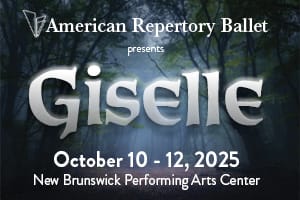Fractured. Awry. Akilter. There is frighteningly little cohesion and order (or shall we call it normalcy?) in the dark visual and kinesthetic world that Katherine Kiefer Stark presents in Falling into Here or The Importance of Normal. The performance is a welcome dance work among the talking heads presentations of the 12th annual First Person Arts Festival, a 10-day affair dedicated mostly to autobiographical narrative expressed through storytelling and song.
In the shifting, dissolving realities of the piece, Stark, as choreographer and director, and through her small group of dancers and musicians, The Naked Stark, leaves it ambiguous as to whether the narrative is a first person account from a family member who suffered from mental illness, or a tale from those who knew her. The audience first views a jumbled set of plywood constructions angled askew, strewn with overturned chairs. Megan Wilson Stern and others arrange themselves within the chairs, then fall asunder, unexpectedly; none sit erect as upright chairs intend. Others lie on the floor amidst the set’s debris, as Eleanor Goudie-Averill obsessively marks and then frolics along a chalk square perimeter she lays down around all.
Some of the scenes embody the emotive power of the narrative’s subject. Stern, announcing “this is where I begin,” executes a high energy phrase of wind-milling arms, leaps, falls to the floor, and distance-devouring reverse runs. She finds though that, on-stage, first her fellow performers and then audience members egged on by these performers give her unsolicited critical feedback on her solo. As she docilely responds to almost non-stop corrections, performers and audience with chalk in hand continually mark and narrow the confines of her once extended and vigorous dance. I want to protest but remain silent amidst the surrounding crowd as the physical confinement and movement restrictions imposed by performers and a complicit audience—the dancer’s family and community, I imagine—become painful to watch. Stern is drained of her freedom, joy and expression—her selfhood—as she reaches physical and mental exhaustion, and declares she must stop.
Much of the performance does not reach this scene’s metaphoric heft. The enfolding narrative text of the family member’s life, handwritten by performers in large script on back wallboards throughout the work, offers biographical details, but their literalness steals emotional force from the dance. The interludes of unison dancing, although forcefully executed by Stark, Stern and Goudie-Averill, seem disconnected from the themes of the work. A contact duet between Stern and Beau Hancock, at times suggesting physical touch without connecting or an inequality of sharing, similarly lacks a clarity of purpose in relation to the piece.
In a beautifully subdued solo performance, Bethany Brooks sits on a plank on the floor, frozen and affectless, staring at a toy piano before her; Stark drags both out of a shadow into a stagelight. At times we hear Brooks’ tinkling notes from this miniature instrument, suggesting memories of an earlier life, and later she plays a full-size upright, continuing a poignant leitmotif of sound beneath the work. Intermittently, we hear above our heads the ominous recorded sounds of footsteps across a wooden floor.
Near the conclusion of the hour-long work Stark devises a short, brilliant duet for Stern and Goudie-Averill. The two lie on their sides, like Siamese twins joined at the soles of their feet, except they are separated by a free-standing plank of plywood that their flexed feet, on opposite sides of the wood, attempt to keep aright as each rolls and writhes on either side, out of sight of the other. It is the dance’s richest metaphor: of a divided self, of the barriers that prevent us from feeling and communicating, and, as the unstable plywood continually falls between the two, the fragility of coping with life and relating to others. In its laconic poetry this brief segment becomes a distillation of the entire work.
Falling into Here or The Importance of Normal, The Naked Stark, Christ Church Neighborhood House, Nov. 8 and 9, www.firstpersonarts.org, www.thenakedstark.com






